 Q and A with Steven Spurlock of Wnuk Spurlock Architects
Q and A with Steven Spurlock of Wnuk Spurlock Architects by Beth Herman
Fostering a relationship that began more than 30 years ago, Steven Spurlock of Wnuk Spurlock Architects was commissioned to create a new 5,250 s.f. hybrid art studio/woodworking shop/office/gallery/storage space for maverick artist Sam Gilliam, a significant force in the former Washington Color School. Commandeering a small industrial building in the District's Brightwood neighborhood that had seen its share of rather disjointed incursions, Spurlock and project architect Marcy Giannunzio proceeded to transform the ragged space through a series of artful interventions. It went on to receive the AIA's 2012 Award of Excellence in Interior Architecture. DCMud spoke with Spurlock about the process.

DCMud: Describe the site as you found it.
 Spurlock: The city square that it sits on is trapezoidal in shape, facing 14th Street with Longfellow as a side street, then Colorado cuts diagonally across the back. There was originally a brick masonry commercial structure of some nature on the southwest corner of the property. At some point it was converted to a gas station. Later, using the two existing masonry walls on either side, someone built a wall on the backside and one on the front side and put a roof over everything, which essentially created an office area in the front a big warehouse area in the back. There aren't a lot of uses for that kind of space in the city, so it was one of those wonderful finds for Sam.
Spurlock: The city square that it sits on is trapezoidal in shape, facing 14th Street with Longfellow as a side street, then Colorado cuts diagonally across the back. There was originally a brick masonry commercial structure of some nature on the southwest corner of the property. At some point it was converted to a gas station. Later, using the two existing masonry walls on either side, someone built a wall on the backside and one on the front side and put a roof over everything, which essentially created an office area in the front a big warehouse area in the back. There aren't a lot of uses for that kind of space in the city, so it was one of those wonderful finds for Sam.DCMud: What gave you the idea to employ, in your words, "multiple programmatic freestanding interventions" - essentially to accord each entity (studio; woodworking shop; gallery; office; etc.) its own personality?
Spurlock: The client definitely wanted something that had a rawness or an edginess to it - not to have it look all pretty and new. For instance we took the old masonry structure and made it into storage. As some of his pieces are constructions -- he sometimes will paint on pieces of metal or plywood, and introduce pieces of canvas with that -- the need for a separate woodworking shop was imminent to fabricate the wood pieces. And you cannot have the wood shop and a paint shop in the same places for dust issues.
DCMud: The office space with its bamboo flooring appears to be more of an oasis.
 Spurlock: The office intervention is kind of a box in a box. It was meant to be a freestanding element that you dropped into the space. As we stopped to think about it, we realized the whole building should look like a container with little interventions introduced into it so you could read a history of how the space evolved: the tension between the old and new parts. Above the office we put a balcony and glass rail. This was done compositionally to make the office box look more attractive, and the artist also likes to go up and see things from a different perspective as part of the creative process.
Spurlock: The office intervention is kind of a box in a box. It was meant to be a freestanding element that you dropped into the space. As we stopped to think about it, we realized the whole building should look like a container with little interventions introduced into it so you could read a history of how the space evolved: the tension between the old and new parts. Above the office we put a balcony and glass rail. This was done compositionally to make the office box look more attractive, and the artist also likes to go up and see things from a different perspective as part of the creative process.DCMud: Describe the artist's studio space.
 Spurlock: It was the block wall when we first started, and because he's in there all the time we knew we had to insulate it. We used canvases of white painted drywall to provide a neutral backdrop for the composition and display of art, as Sam likes to hang what he's working on to contemplate it. We cut windows into the drywall to reveal sections of the old masonry in between for contrast. At the party walls, the drywall is partial height and pulled away from the corners so it appears to float in a wall of masonry. At the exterior, it goes full height for improved thermal insulation of the building. All of the walls are built with studs, covered with plywood, and then there's drywall on top of the plywood to allow him to hang heavy items anywhere he wants. It was a nice contrast to the old brick - to create that juxtaposition of the old and new.
Spurlock: It was the block wall when we first started, and because he's in there all the time we knew we had to insulate it. We used canvases of white painted drywall to provide a neutral backdrop for the composition and display of art, as Sam likes to hang what he's working on to contemplate it. We cut windows into the drywall to reveal sections of the old masonry in between for contrast. At the party walls, the drywall is partial height and pulled away from the corners so it appears to float in a wall of masonry. At the exterior, it goes full height for improved thermal insulation of the building. All of the walls are built with studs, covered with plywood, and then there's drywall on top of the plywood to allow him to hang heavy items anywhere he wants. It was a nice contrast to the old brick - to create that juxtaposition of the old and new. DCMud: Artists usually require a prodigious amount of light. How was this addressed?
DCMud: Artists usually require a prodigious amount of light. How was this addressed?Spurlock: We grouped 10 skylights in the center to control the natural light - didn't want them washing out the walls at all times. Along the perimeter, where the hanging walls are, we put in a lot of high tech lighting fixtures to illuminate the pieces on individually-controlled dimmers. For evenings or cloudy days, there are color temperature-corrected fluorescent lights that we installed in a playful pattern to make the space less static. Solar voltaic panels on the roof allow the artist to generate his own electricity to satisfy his interest in energy conservation.

DCMud: Was there some, perhaps more personal element of the design that came as a surprise?
Spurlock: One of Sam Gilliam's early breakthroughs as an artist in the 1960s was a stained canvas that he draped from the ceiling, or over things. In his former studio, he didn't have enough space to do that and he'd not done it in years.When he got into the new space, he realized he could once again do that, which was a really nice benefit for him to be able to go back to his roots if he wanted.
photos courtesy of Anice Hoachlander







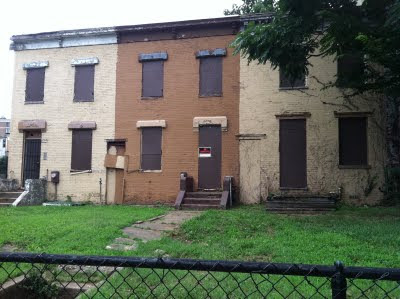







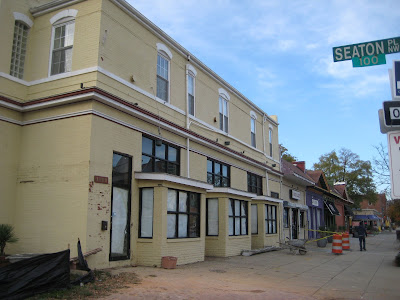

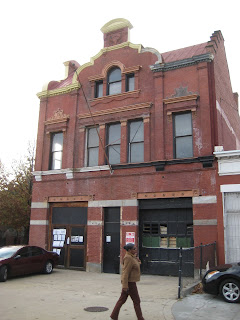

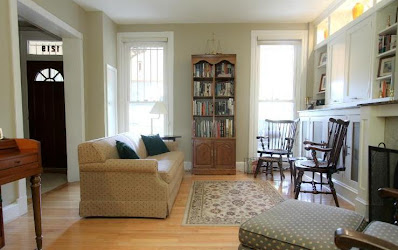
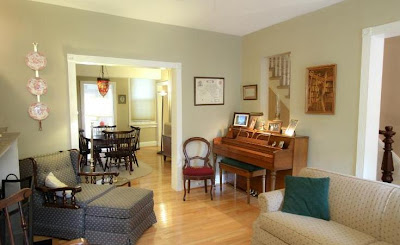






_GaryGriffith.jpg)



















